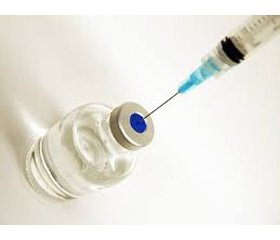Журнал «Медицина неотложных состояний» 2 (65) 2015
Вернуться к номеру
Performance evaluationtotal intravenous anesthesiapropofol infusionbasedontarget controlled infusionduring laparoscopic cholecystectomy
Авторы: Mashin A.M., KobelatskyY.Y. - Department of Anaesthesiology and Intensive Care Medicine of DnepropetrovskStateMedicalAcademy; Dnepropetrovsk Regional Hospital named I.I. Mechnikov
Рубрики: Медицина неотложных состояний
Разделы: Справочник специалиста
Версия для печати
anesthesia, TCI, propofol, sevoflurane, laparoscopic cholecystectomy.
Summary. Articleis devoted toa comparative study ofthe effectiveness oftotal intravenous anesthesiabased onpropofol infusionatthe Target Controlled Infusion (TCI).Inrandom orderdeterminedeach timethe day of surgerywith a computer, the patients depending on the methodof maintaininganesthesiafall into one ofthreetreatment groups:1.GroupTIVA -total intravenousanesthesia on the basis ofDiprivanandfentanylinfusionhypnoticthroughinfusion pump(B/braunperfusor compact,Germany) -20 people;2.GroupTCI-based onDiprivanandfentanylinfusionhypnoticonthe Target Controlled Infusion usinginfusomats(B/braunperfusor Space,Germany) -20 people;3.GroupSEVO -inhalation anesthesiabasedSevoranbylowflowandfentanylapparatus(S/5AvanceDatex-Ohmeda) -20 people.
In the groupTIV -Diprivanaverageintroduction ratewas 6.9+1.6 mg/kg/hour, i.e. 34.3%(p <0.05) lower thanrecommended fortechniquesTCI. In this group,there were no casespersistenthypotension , and the reduction of blood pressurebased onthe complexevaluation of clinicalsigns ofthe efficiencyand dynamicsanesthesiaBIS,were 5briefepisodesof inadequate protectionand onlythreepatients- casesexcessivedeepeninganesthesia. In the group TCI - in accordance with a predeterminedalgorithm, the target concentration ofDiprivan(Ce)was setin the rangefrom 3.5 to4mkg/ml.In the analysis ofintraoperativechangesnotedthe expected decline inBISafterinduction of anesthesiato 47.6+9.8unitsand furtherprogressive declineto 40.5+4.2unitsthatwas regardedby us asunreasonable(excessive, but not dangerous) deepeninganesthesia.The lower threshold of40relative unitsestablishedby usfor the "effective depthof anesthesia" was crossed4patients.Only one patientwas recordedepisodeineffectiveprotection, probably due tothe unjustifiedreduction of the doseof fentanyl.Inthe latter case,the observed changeswerecroppedbolusopioid. In the groupSEVO -changethe target concentrationSevoransupervised by a physicianon the basis andintraoperativemonitoringmultigazdynamicsBIS .As a result, the average concentration ofthe targetend-expiratorySevoranwas 0.9±0.2MAC.After theintravenousinductionin 4patients hadshort-termphenomenonhypotensionwith the deepeningindicatorsanestheticsleepup to40.2±3.2units; furtherdynamics ofanestheticdepthof sleepremainedwithin the recommended rangeof 40-60, ineffectiveprotection ofepisodeswere noted.
It was concludedthat thedeviceTCIcreate conditions forhigh-qualityanesthesiastablehemodynamicsorpredictabilityof awakening.No adverseevents related to theTCI,have been reportedduringthese studies.The quality ofanesthesiaobserved atTCI,has always beensimilarto or better thanthe manualinsertion andcomparable inhandlingwithinhalationanesthesia, that in comparisonwith the priceof equipmentforinhalation anesthesiabylow-flowmakes itmore profitablefor hospitalswith a limitedvolume of financing.

